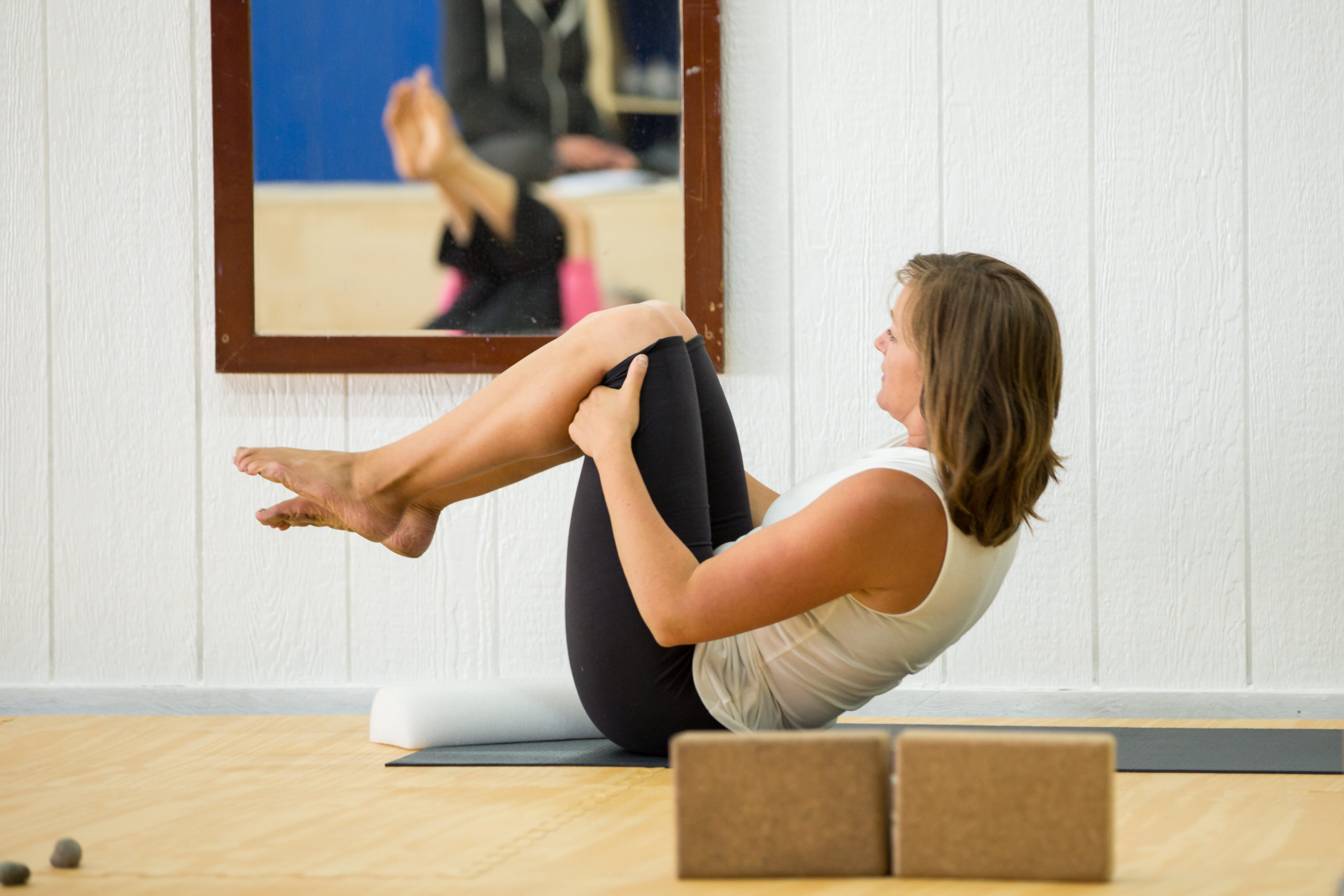This article from 2011 was edited and updated with new photos and resources in 2020. To find more healthy pelvis information, check out this list of Our Best "Healthy Pelvis" Resources.
I'm trying to write one article each day. Today, I am still in my pajamas at 11:30 AM. I haven't had a shower in the last 36 hours. We've eaten breakfast and I've played with my baby and answered emails the rest of the morning, and that is all. This is my life.
Today's article is Rolling or Thunking Like A Ball? and it's about the exercise Rolling Like a Ball, which is a great exercise name if your body can roll and less if, as it can be for many of us, our rolling is more like a backwards sort of plopping onto the ground (thunk!) and then straining the neck and psoas to get back up.
People always ask me which exercises are good, which is hard to answer because it's not a move that's good or bad, it depends on what movements your individual body needs and how you use your body while doing them.
Rolling Like a Ball is a great example of how an exercise can be completed using muscles/movement patterns you want to strengthen or completed with muscles/movement patters you might not want to reinforce. Let's say you're trying to strengthen your torso for improved abdominal or pelvic floor strength. Rolling like a ball can be a core-improving move but it can also be done in a way that makes your issues worse. You can read more on this move and when to use it in Diastasis Recti, but also, here's a video explaining more.
Also note: If you are straining in any way during this exercise, pay special attention to any downward force you may be creating (did you pee your pants or pass gas when you did it?), these are signs that you are not using your abdominals but are wrestling your own pressure systems to attempt an exercise you're not strong enough for.
Start with just lying on your back, knees held firmly into your body with fixed arms, and work tiny movements from your abdominal muscles only—be on the lookout for any leg swinging, head swinging, gritting your teeth, or grunting—and work to move without them, even if it's only 1-2" of movement. All of these movements provide information about how you're getting your movement done.
